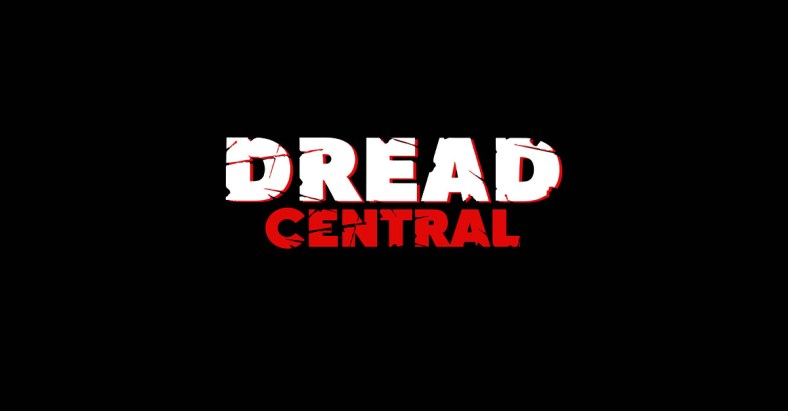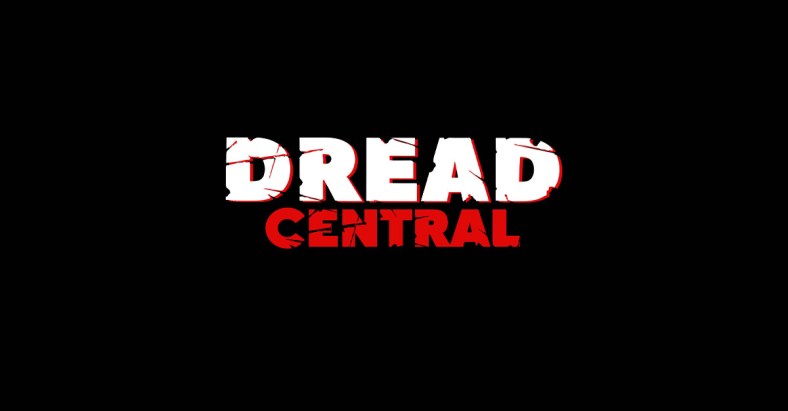Celebrate Friday the 13th by Reading Our Exclusive Interview with THE FINAL CHAPTER Director Joe Zito!

If you were jacked into horror twitter in April of 2020, you may have had the pleasure of participating in a live tweet hosted by Pluto TV and Fangoria featuring an all-day Friday the 13th marathon, with an emphasis on the fourth film in the series, The Final Chapter. Arguably one of, if not the best entries in the series (it’s got the Joe Bob Briggs seal of approval), Final Chapterisn’t anything quite like the other films in the series, taking more time to develop its characters, breaking a number of conventions, and having an altogether grimmer, more nihilistic tone. The result is a film that feels something like a John Hughes movie by way of Michael Hanake—an eerie, uncanny meditation on the inevitability of death.
Synopsis:
A carefree lakeside vacation is interrupted by the re-emergence of killer Jason Voorhees (Ted White). After he escapes from a morgue, leaving bodies in his wake, Jason travels to Camp Crystal Lake where a group of friends is staying. The teens meet some locals: Tommy (Corey Feldman) and Trish (Kimberly Beck), as well as secretive hiker Rob (Erich Anderson). As the group of teenagers engages in drunken debauchery, their numbers begin to dwindle, and pieces of the past resurface.
The film proved fertile material to get fans discussing the movie, as well as asking a number of questions the answers to which not even I was sure of. Is that Chris Higgins in the hospital? Whose cabin are Jimmy and company renting? Was Jason supposed to have been dead in this one?
At a loss to respond myself, I decided to go straight to the horse’s mouth—Joe Zito, the film’s director. With a memory still as sharp as the day he first yelled “Action” on set, Zito was kind enough to take a few minutes to participate in a Final Chapter post-mortem on some lingering fan questions.

Dread Central: In the beginning of the film, there’s a shot of a crying girl and who seems to be her parents in the waiting room. There’s a debate in the fan community as to whether that’s meant to be Chris from Part III, showing she’s OK, or if it’s meant to be the family of one of Jason’s other victims grieving their death. Can you give us a definitive answer?
Joe Zito: Actually, no one has ever asked me this question, so, congratulations! No one has ever asked this question! I’ll tell you, this is one of the things that directors really have to wrestle with: the subject of death. It’s something directors really have to wrestle with making any film- you need to decide how real it is. And grieving families is not something we’d seen in slasher movies or even often in horror films. And it’s real. It’s not just the fun of the beast going after the victim, or the victim going after the beast; it’s real people who’ve died. And that’s a very difficult decision; and I know when you look at the scene in the film it’s a throwaway and most people don’t even pay attention to it at all, but it was more real than had been done in Friday the 13ths before. You know that when you’re making a Friday the 13th, you’re in a deep fantasy world, but I wanted the movie to be different. I wanted the movie to be particularly different. So the whole effort was to make a movie that was more real, and characters that were a little more real than the rest.
I’m not denying that it’s, “yeah, there’s teenagers and Jason is gonna chase them and that’s how it’s gonna work out,” sure, you know that before you go in. But I had hoped to make it more real, and particularly, I wanted to make the opening about death. I didn’t want Jason to just get up and start chasing victims. I wanted the opening to be about death in general. We had this ethereal music scored, and I talked to Harry Manfredini a lot about that. It was all about seeing the dead victims from the previous movie, and of course the first shot ending with a sheet going over the dead Jason. I wanted to keep him dead as long as possible. The reasoning was to make the audience co-conspirators, so that when they cheered for Jason to get up, they would have to take responsibility for what Jason did.
Getting to the question: No, it was never Chris. It was a grieving family. The point was, putting the family there—all together—is they were real. It was a family grieving for their dead. It was actually something that was not an easy decision to make because that changed the tone of the film to something a little more real, and I’m not sure everybody was happy about that.
DC: The Jarvis house was, of course, real, but you built and dressed the kids’ cabin. What was the idea behind the set design? It’s got a very particular aesthetic, like it belongs to someone’s grandparents.
JZ: It’s someone’s grandparents, but not necessarily one of those kids in that house. It was a place they arranged for somehow—there was no Air BnB back then—but it’s someplace they’ve rented. Where they could discover things from previous times. They discover old movies, silly stag films, they discover old records and dance to them. It was really supposed to be about sending them into this period. And I thought giving the house this lost, dead, period feel made it creepy. They were in a place where they didn’t really belong. It wasn’t a place they would normally pick if they had a choice. So it was a little uneasy a location.
DC: Speaking of the stag reel- where did that come from? People have tracked down that aerobics tape Axel watches but to my knowledge no one’s identified any of the loops.
JZ: I don’t remember where they came from! But I knew that I wanted an old-time stag film. It wasn’t there for the content of it but for the foolishness of it. I wanted them to laugh at it. It’s all about trying to manipulate the audience’s attention. In order to make a film of this type work, it’s a big shell game and you’re manipulating the audience, moving their attention from one thing to another, moving their mood from one to another. They know what’s coming. They know who’s gonna get killed. They pretty much know when they’re gonna get killed. They don’t know how they’re going to get killed. The more you can catch them off guard or do something unpredicted, the more it makes the movie entertaining. I had the vision of having the knife come through the screen, so the stag film was really a distraction for the killing of Ted.
DC: Most slasher films tend to toss together a bunch of people who’d never be friends together, just so you have this assortment of types, but, with the kids in this movie, you really get the sense of them as real people with a lived history. Did you have concrete backstories in mind for them?
JZ: In the vaguest of terms, but yes, of course. You knew which characters were friends, which ones were in relationships and– you know, there’s all this talk of sex being punished in horror films, but, the guy who gets squashed in the shower—they’re falling in love. And they’re killed for that, at the moment they’re falling in love.
But we had rough ideas of who the characters were, I had the idea that I wanted twins, and I came up with their personalities. Barney Cohen has reminded me of this, I said to him, “Just make them real.” I’m sure his recollection of that is right, although I don’t remember it [laughs]. And in an effort to make them a little more real than the cartoons you normally see in this type of movie. They don’t become real like they’re in a Martin Scorsese film but they become more real.
DC: Speaking of the aerobics video- a lot of viewers- myself included- have said that scene hits a kind of nostalgia sweet spot. Tell us about putting that in there?
JZ: In a way, it’s the same answer I gave about the stag film—not where they came from but why we used them. It’s the same thing. Those videos were televised. You could see them on your television at that time. And the theory was, they were presented with the conceit they’re just trying to be aerobics videos, but, of course, it was about looking at the girls. That’s what those videos were about, for sure. And I remember seeing them and thinking “this is the strangest thing” because it’s a bold lie by the network. They’re just putting this stuff up because of whatever value it has as—well, what it is. And it was great to use with Axel in the morgue because of the kind of pervy character he was, to have him look at that. I thought it would be fun. Again, it was all about distracting the audience, having them look at something so they’re not looking at something else.
DC: Final question, and another one there’s a lot of fan debate about. You mentioned earlier “dead Jason,” and how you wanted the movie to deal with themes of death. Did you approach Jason as already being dead, or just another unstoppable- but mortal- killer?
JZ: I’ve revised my thinking on this. Remember, this was a time when you had these unkillable villains like Michael Meyers. You couldn’t kill the beast. But I like the idea now thinking of him as more of a zombie.
I’ll tell you [laughs] if you’ll allow that conceit, and he’s a zombie—and he seems to be, because he’s gone through things that normal people can’t ordinarily go through– then toward the end of the movie, when he runs, we’ve offered a running zombie. [Laughs] Jason’s a running zombie!
It’s actually funny to talk about this now, but, the idea of Jason running is something that Paramount did not like. “Jason’s supposed to walk,” they said. “And he walks slow.” He’s not supposed to run and run fast. But I did it anyway. And I remember being in a movie theater when Jason runs in, at Kimberly Beck, and I heard someone say “Oh shit, he runs!”

Categorized:Interviews News

